I’m making some changes to the newsletter
You might be thinking ‘Why is the title for today’s piece so long?!’ Well folks, it’s because I’m testing a new format.
Over the last few months I’ve tested out the ‘Other interesting things’ section at the bottom of every piece, consisting of topics I find interesting but don’t have the time of real estate to share deeper insights on.
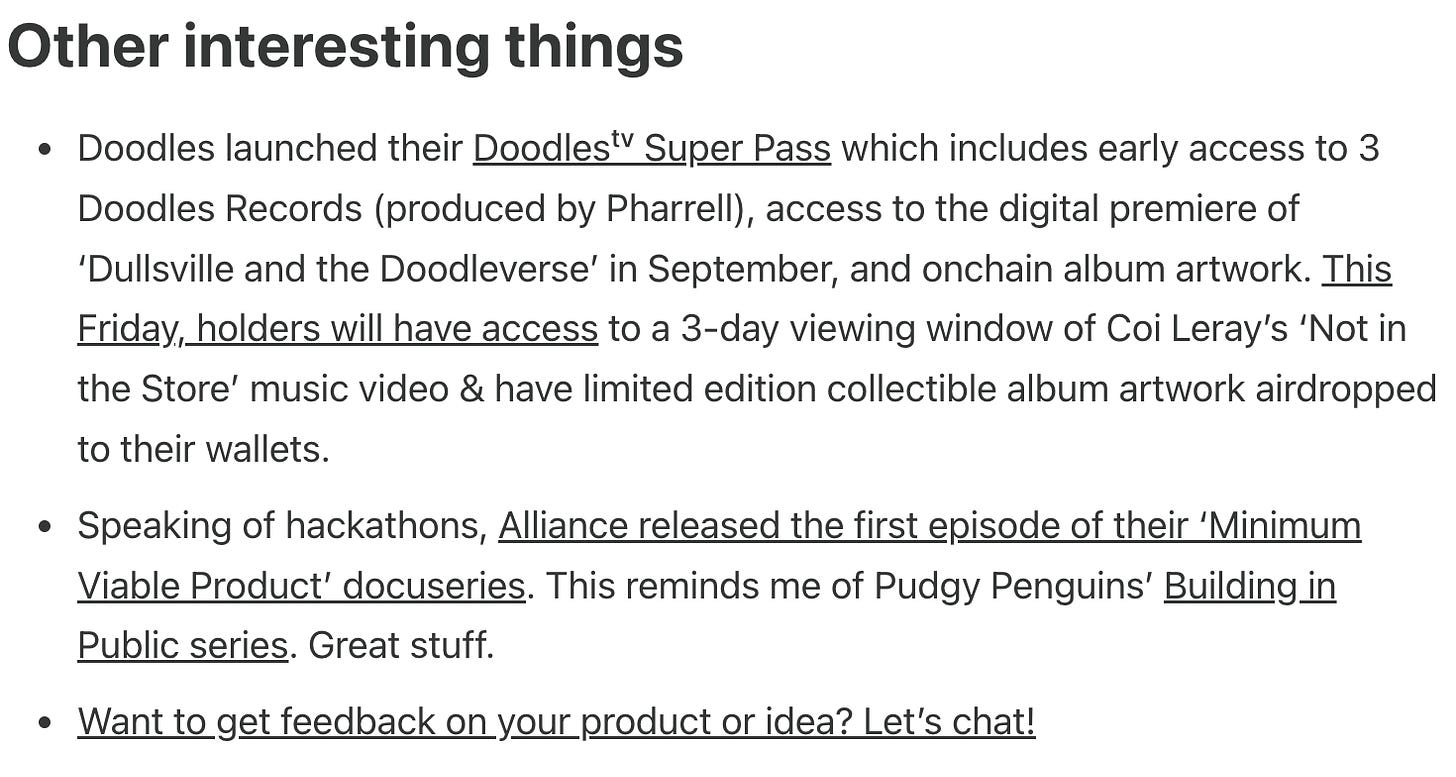
By the time you’re done reading a longer piece about one focused topic, chances are you aren’t as interested in digging into other topics. Because of that, I’m going to separate long pieces from shorter segments:
Tuesday pieces will be dedicated to a single topic or theme
Thursday pieces will be dedicated to shorter segments (aiming for 3-5 topics) that focus on key takeaways, insights, and hopefully serve as an invitation to dig in further on your own. And if you want to hear more of my take on a particular topic, my inbox/DMs are always open. So don’t be shy!
In food form:

Let’s get to it!
Ugly fonts
Nick Kolenda is a consumer psychology researcher with a great newsletter that highlights tactics that are particularly applicable in the ecomm space. I’ve subscribed for several years now and there are a lot of insights that are applicable in this space, or at minimum worth putting in the back pocket.
Today’s topic was around displaying good deals in ugly fonts:

Typically, fluency (ensuring a message is easy to read) is important when it comes to communicating a message. However, disfluency can be persuasive when leveraged creatively. The key insight from a marketing psychology study was this:
the increased effort required to process disfluent price information can lead to deeper information processing. If the advertised price offer represents a good value, it can enhance purchase decisions, even if customers prefer the disfluent display less
What this means is disfluency can act as positive friction when it comes to grabbing attention. In the constant war on attention on certain platforms that are restrictive when it comes to font, disfluency can be an advantage.
You can’t choose the font for your X posts, but there are other ways to work around that. For example, there are font tools utilizing unicode (a digital text standard) to make text more expressive.
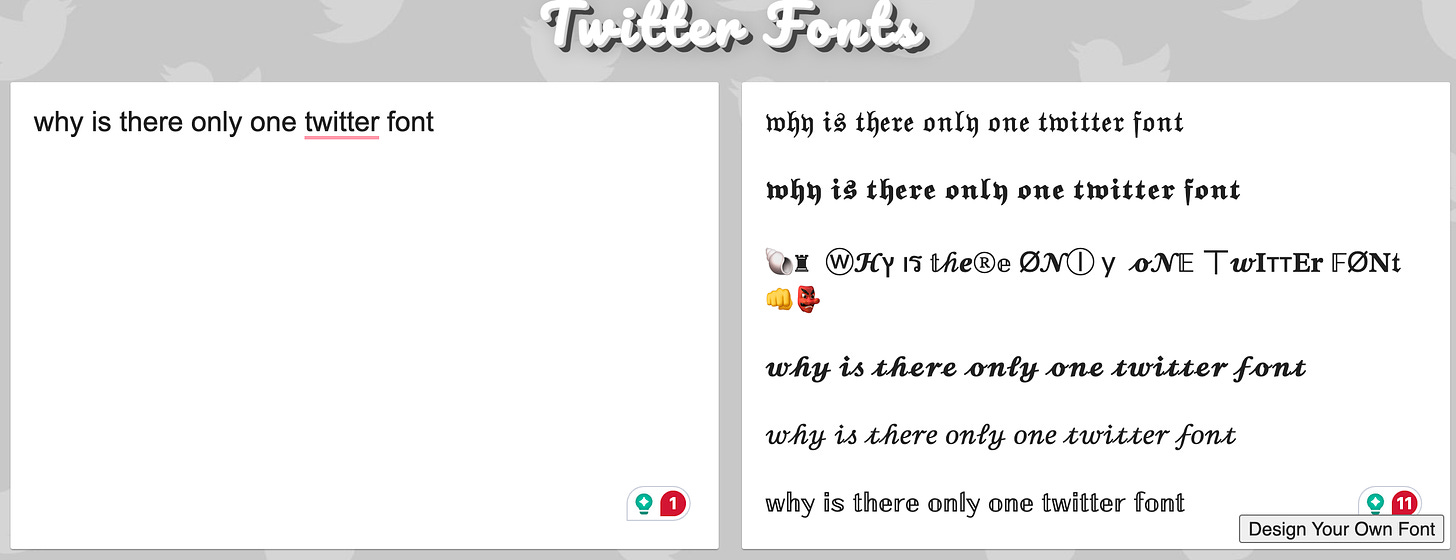
We’ve seen this approach adopted by various projects in both an evergreen and one-off format:
Goblintown’s (in)famous superscript and subscript formatting to amplify the community’s persona and vibe. And they’ve been at it for 2 years and counting
Ethena combining text, image, emojis, and formatting to communicate a creative update
Goblintown and Ethena couldn’t be any more different, but they used disfluency to their advantage.
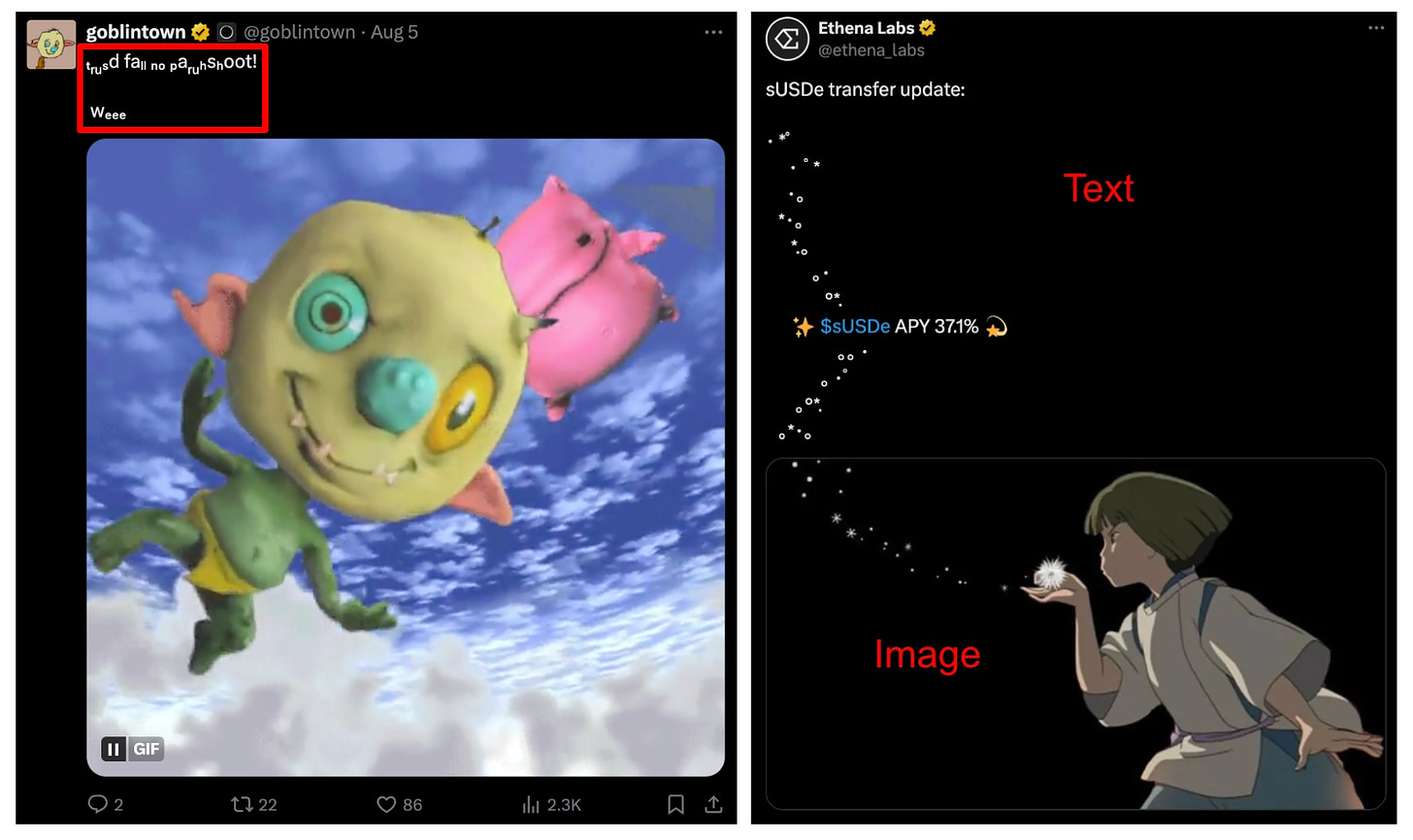
The only way to figure out how this can be best applied for a specific product or community is testing it out. If it doesn’t work out, it’ll be quickly forgotten and buried into the depths of the algorithm. If it does work (measured by engagement, replies, etc.), it can be doubled down on and be implemented in a specific capacity (eg: a certain type of recurring announcement or topic) or be an extension of a brand persona in an evergreen format.
Fully onchain games (FOCGs)
Nicolas Vereecke from Bitkraft VC recently published an in-depth piece on Fully Onchain Games (FOCGs). It’s a long read but a worthwhile one, as it really provides in-depth context on how this niche can potentially influence a larger paradigm shift for gaming in general.
Although this was published a couple months ago, it popped up on my radar multiple times this week, so I figure it’s worth sharing here as well.
The insights section from Bitkraft is also filled with nuggets. Check it out, whether you’re in the gaming industry or not.
Have you played a game before? If so, play this game of Share or Subscribe!
Distribution is the Bottleneck
Seyi Taylor publicly shared slides from a Columbia Business School talk, making the case that distribution is the bottleneck for outsized returns.
In the presentation, Seyi provides several examples of the boom and bust cycle of verticals that struggle due to distribution changes:
Online news businesses impacted by Google SEO changes
Social content platforms (Buzzfeed, Upworthy) impacted by social media algorithms
DTC ecomm impacted by platform tracking restrictions (eg: Apple’s App Tracking Transparency policies)
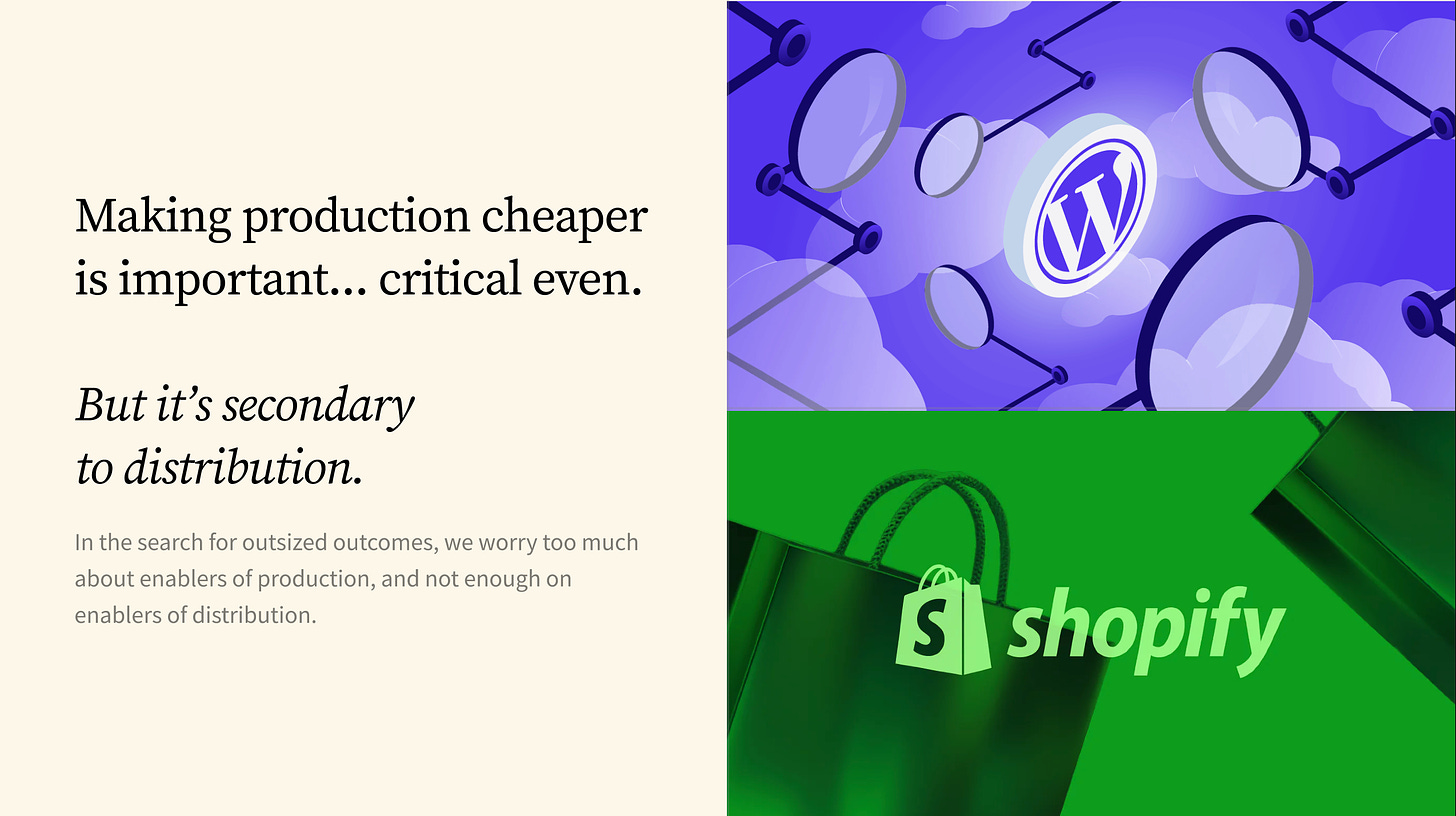
The points are relevant for growth and marketing in general, and show why direct relationships with audiences will only increase in value. If only…
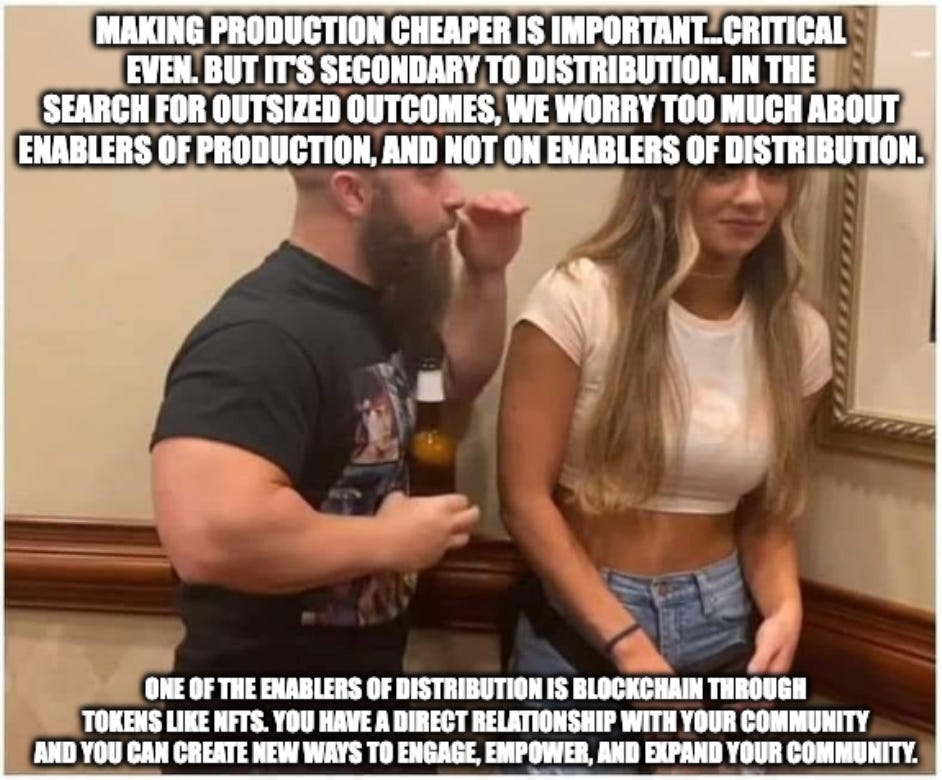
(PTAL) Please Take A Look
Earlier today, I saw this post by Quinn Campbell (former VP Growth at Axie Infinity).
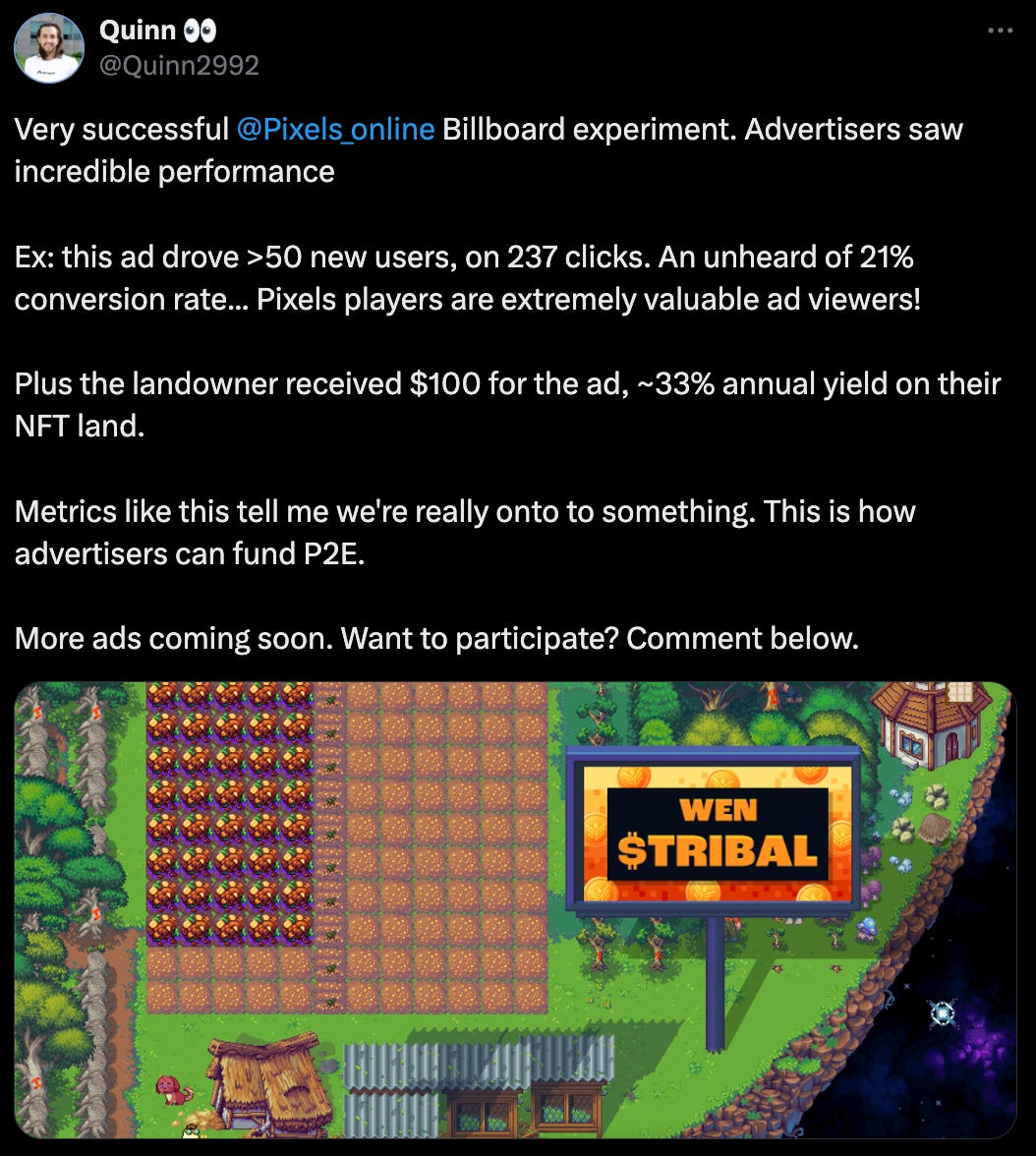
In Quinn’s mini-case study, he defines a user as an account that onboarded onto Tribally and registered for the TGE. Impressive indeed. The billboard experiment was facilitated by PTAL, an advertising protocol that he founded.
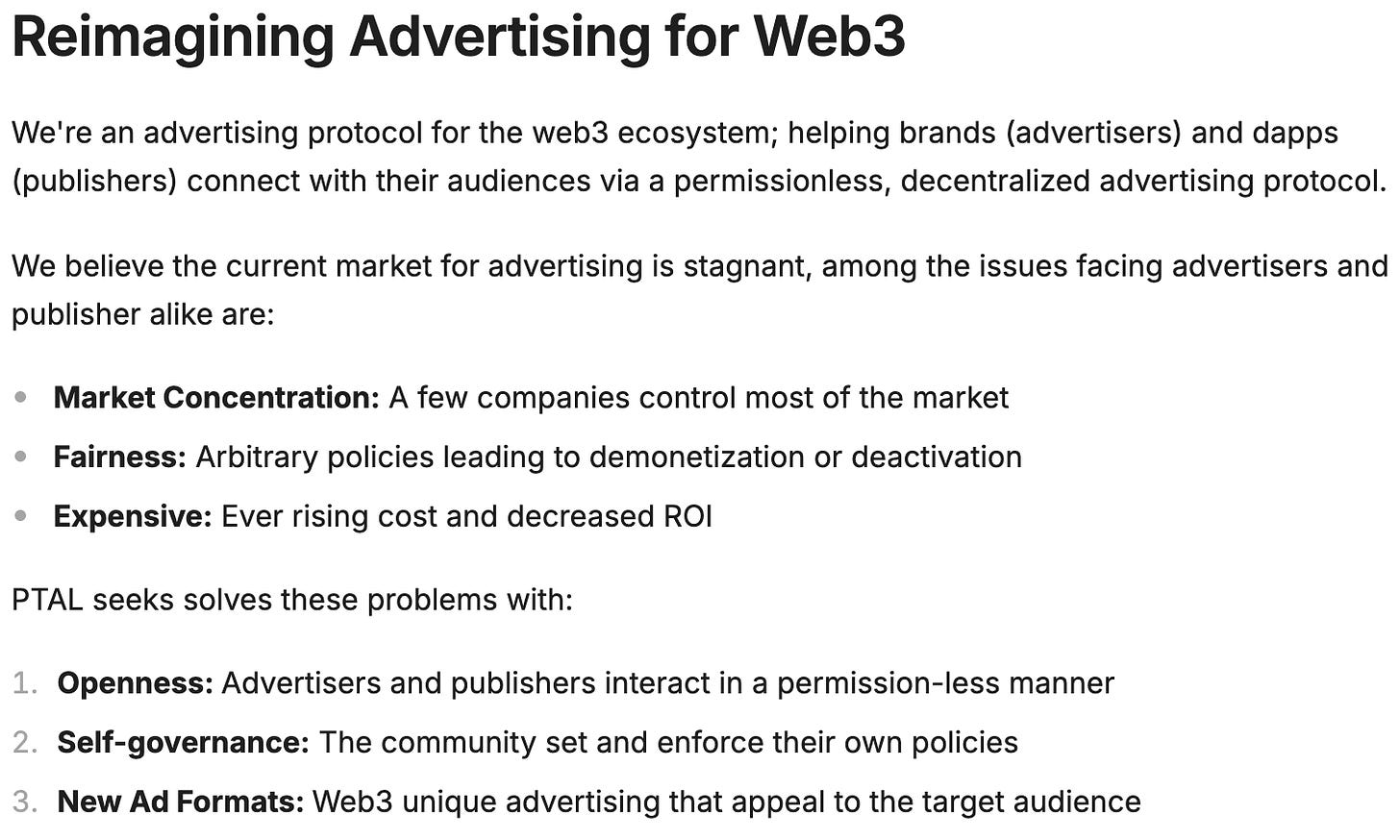
As someone with a performance marketing background, this is particularly exciting as a new frontier for advertising in a way that allows users (in the example above, the Pixels landowner earned $100 for displaying the ad for driving users to Tribally) to benefit as well.
The PTAL docs have a lot more context and provides a glimpse into what the future of onchain advertising could look like. I might have to write up a longer piece on this 😉
See you next week!
